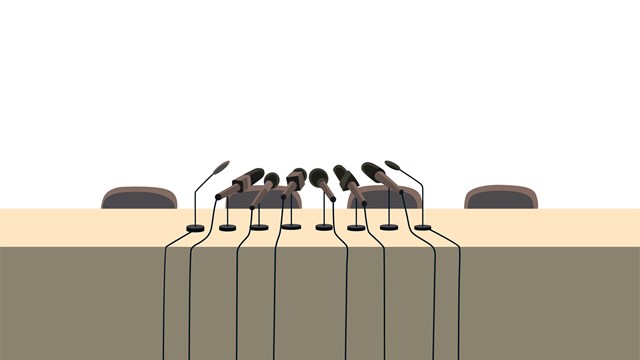
With smartphones dominating the cellular market, people now have Internet access anywhere and everywhere they go. While shopping and “googling” are leading reasons to use the Internet, the rise of social media has changed the way in which people interact with one another, and with businesses.
“More and more directors, even ones from older generations, are using Facebook, Twitter, LinkedIn and Google+,” says Attorney Donna DiMaggio Berger, managing partner of the Florida-based law firm Katzman Garfinkel & Berger. “Because of this, it is important that our common interest ownership statutes keep pace with technology and the way boards operate today.”
A recent CNET report found that 27 percent of small businesses are on Facebook, 18 percent are on LinkedIn and seven percent use Twitter. While the Facebook percentage may appear small, the report found that social media use in this demographic has doubled with 75 percent of businesses polled owning a page on some type of social networking site. Boards and homeowner associations that have not taken the plunge should consider the importance of having a social media presence. For example, 64 percent of Twitter users and the 51 percent of Facebook users say they are more likely to buy brands if they “follow” a company or are a “fan” of a company.
“Social media has allowed for two-way conversations to take place on the Internet using the same vehicles that consumers, no matter their age or generation, are already using,” says Deborah Boza-Valledor, chief marketing officer for the Miami Association of Realtors.
Social networking grew in popularity due to the personal one-on-one experience best facilitated by Facebook. This trend has entered the business world with more realtors and brokers using the service which translates to how boards and management companies are beginning to communicate and interact. “Realtors can now have true market and information conversations, as well as social conversations,” says Boza-Valledor. “They can go where the consumer goes.”
While the writing is on (Facebook’s) wall, some remain slow to adopt, explains Berger. “I don’t see social media outlets like Facebook, Twitter or LinkedIn as being particularly helpful for community associations,” she continues. “Those tools are much more suited to the managers running these communities and the directors serving them individually to benefit from the shared wisdom out there in various LinkedIn groups and on Twitter and Facebook.”
Robin Habacht of Monticello Property Management with an office in Matawan agrees. “I find these sites are wonderful social portals for friends and family to interact and LinkedIn is a great corporate marketing tool. But I don't feel comfortable putting my client’s business on Facebook or Twitter since the content and privacy is not controllable.”
The Internet Age
When the Internet first came to prominence, there was a generational divide among adopters. Email was considered unsafe and for the then older generation, it was deemed impersonal. Today, emails are not only second nature for all computer users but a more antiquated form of communication. Text messaging and communicating through social media sites is used more often.
“The fastest growing segments of the social media market, especially Facebook, are those over 55,” says Boza-Valledor. “According to the Nielsen survey for the third quarter of 2011, more than twice as many people over 55 visited their social-media networks via a mobile phone this year than they did in 2010,” she continues. “This means, in part, businesses, services and philanthropic outreach must take into account that one of their larger markets is growing as mobile and connected as their Millennial counterparts.”
According to recent Pew research poll, mobile users aged between 18 and 24 send, on average, 109.5 text messages per day, or 3,200 messages per month. Texts sent by 25 to 34 year olds averaged 41.8 per day. Respondents 55 and older sent between four and 10 texts per day.
As a result of increased communication, the once vibrant and informative community bulletin boards that used to announce meetings, events and legal notices has become more static with the rise of technology. Like the domino theory, more and more people look to advanced, streamlined technology to receive information. Many communities are even replacing bulletin boards with websites, which are more interactive and easily accessible. “I find that community websites have been a great tool in our industry serving to keep communities informed, bringing about change in apathetic communities who now get information about the activities in their communities easily through websites which raising awareness of the board's actions on behalf of the community, activities within their communities and townships as well as who their neighbors are,” says Habacht.
Among social networking concerns is security. According to Bloomberg, out of 4,640 organizations polled, more than half said computer attacks increased as a result of workers using social networks. One quarter reported that the attacks rose by more than 50 percent.
“You have to be willing to take the good with the bad and must be willing to monitor 24/7. Monitoring your social reputation—the reputation of a condo/homeowners association—is a full-time job and when consumers want an answer to a question or post a comment, especially negative ones, they want and need to be answered as quickly as humanly possible,” says Berger. “The ability to turn a negative comment into a positive response takes twenty-four-seven monitoring and takes someone who has the ability to respond appropriately.”
The Facebook Effect
In 2010, the film The Social Network was a huge success. With over 800 million Facebook users worldwide, it is no surprise that the movie grossed nearly $225 million, as ticket holders were essentially extras in the movie. From a personal standpoint, Facebook has been a resounding success due to its ability to share updates, photos, media and other interests effortlessly. However, not all businesses or organizations are seeing the value, and remain watching the game from the sidelines.
With no hard data to determine how many boards and management companies are currently using social networking sites, it is difficult to ascertain how this aspect of Internet connectivity is impacting this business demographic. Aside from security, there are understandable reasons why some organizations are slow to adopt.
“Up to now many associations haven’t taken on (the responsibility of) social networking as it is something the management company will usually do,” says Sarah Elles-Boggs, a realtor with Keller Williams Realty. “For many boards, the slow adoption rate is due to a management issue. “If a resident in a building used social media to somehow attack the building due to an issue, they might not realize who is managing the social media site and therefore the problem is not effectively communicated but exists on the page.” She continues. “There are other cases where the person in charge of managing the social media site will turn over complaints to the building’s on-site manager. It does come down to social media management.”
Social networking is longer a hobby but a profession. According to Monster, the number of postings for social media-related jobs rose 75 percent over the last year. In September, for example, there were roughly 155 positions available an increase from an average of 88 per month a year ago. If the decision is made to move forward with a social networking presence, the first question that should be asked is: who will manage it?
Larry Sauer, executive vice president at Taylor Management in Cedar Knolls, says that he and the business operations manager share the responsibilities of managing the firm's LinkedIn account which they have used for about two years. “I think for many property management companies [the role] falls under the marketing or advertising director.” Many condo associations and homeowners associations adopt a similar procedure to Taylor, Sauer says, utilizing the existing skills of several departments instead of hiring an additional person.
Berger maintains that social networking might not be the right fit for every organization suggesting that there is more than one way around the barn. “In terms of the community as a whole, a well-run community association website makes much more sense in terms of organizing information and soliciting member involvement. Association websites like those provided by AtHomeNet can reduce a director’s and manager’s workload and cut down on association costs such as printing and postage by directing members to the website for most of the information they need such as copies of certain association records or calendar of events,” she continues. “The board can use someone internally to serve as the website administrator or they can use a company to do so for them.”
There are some protections under Federal law for operators of social media sites. Section 230 of the Communications Decency Act eliminates liability (primarily for defamation) for information posted by third parties and Section 512(c) of the Digital Millennium Copyright Act eliminates liability for copyright infringement claims involving content posted by third parties.
A post on condoassociation.com spelled out the benefits and drawbacks of HOAs using Facebook. “There may be great benefits, but there are plenty of risks to consider as well. If you do not have a policy in place for using social media within your HOA then get working on it as soon as possible.”
Having a policy is imperative, the writer continued. “The policy should include who (staff or board member titles, not individual names) should have access to create posts. You must define what constitutes a post. If “friending” is going to be permitted by the organization, what form (if any) of validating “friends” is in place and what is the decision criteria for "defriending" people. You must consider if this is going to be used as a one-way or two-way form of communication. A limit should be placed on the time used to manage the tool or at least some definition of the types of information that should be posted and at what time of day the information is suggested to be posted—events, announcements, news, etc. and those should be easily distinguishable from opinions (by definition). A reporting mechanism—not to Facebook but to the HOA board or property manager—should be provided to communicate abuse or other similar issues. There is more to it than just jumping on board and saying "friend us on facebook." Don't let software vendors or web developers (of which I am one) fool you into thinking this is the greatest thing since sliced bread. I'm not saying at all that Facebook is not a valuable tool. I'm just pointing out that its value can come at a cost if you are not prepared.”
Linked into Tweeting
Twitter is another social networking phenomenon; however, according to the company, it has about 200 million open accounts although it estimated that 100+ million are active or used weekly opposed to Facebook which claims that of its 800 million users, half return on a daily basis. While there is business viability in both platforms, the adage “different strokes for different folks” holds true.LinkedIn, the professional social media site, has grown considerably in recent years. In September, President Barack Obama gave a speech on The Jobs Act at a town hall meeting in San Francisco that was sponsored by LinkedIn. The company has upwards of 120 million registered users, spanning more than 196 countries. For many management companies and boards, this site represents the possibility to connect with vendors and other professionals. Another social site MySpace claims to have about 125 million users.
“Personally, I am an avid user of LinkedIn,” says Sauer. “I think it raises the professionalism of the firm as long as it is used professionally. We use it as a resource or tool to reach individuals that are not currently employed by Taylor. We use it to announce promotions, we use it to advertise events that we do such as philanthropic type events and to educate people where we are going to IREM events and CAI events.”
Once only utilized by techno-loving teens and fame-deprived celebrities, social media, when used appropriately, is a professional and accepted form of communication. Whether you're tweeting or linking in, social media is one great and easy way to obtain and maintain relationships with other management companies and condo associations.
No matter what tool you use or decide against using, the key to social networking is sharing information and building a community, and that’s what community associations are all about.
W.B. King is a freelance writer and a frequent contributor to the New Jersey Cooperator. Editorial Assistant Maggie Puniewska contributed to this article.






Leave a Comment